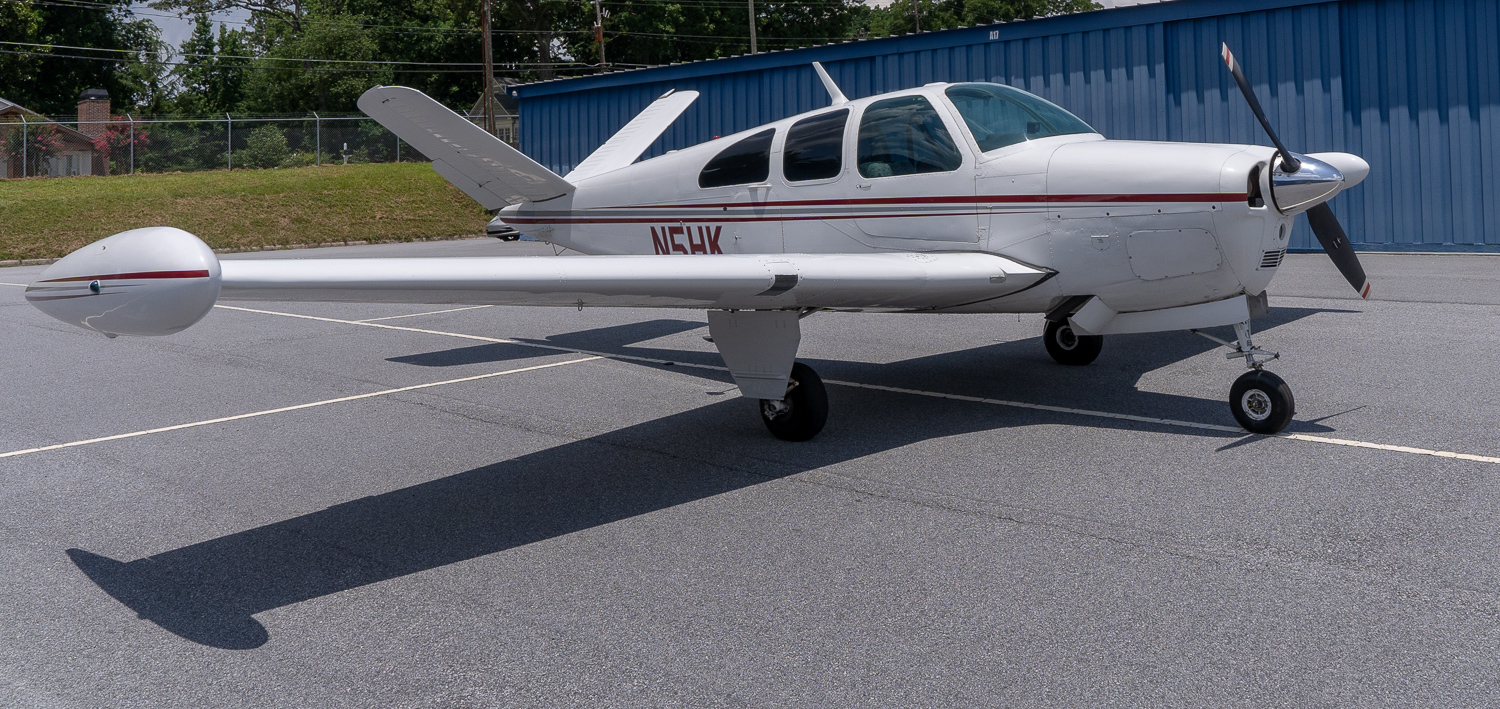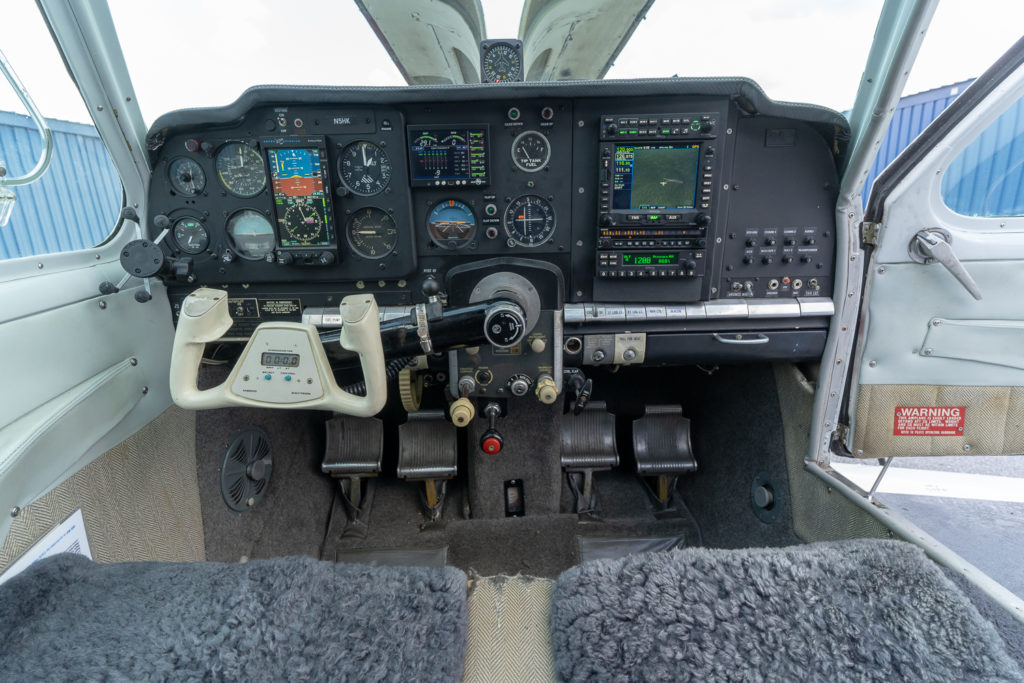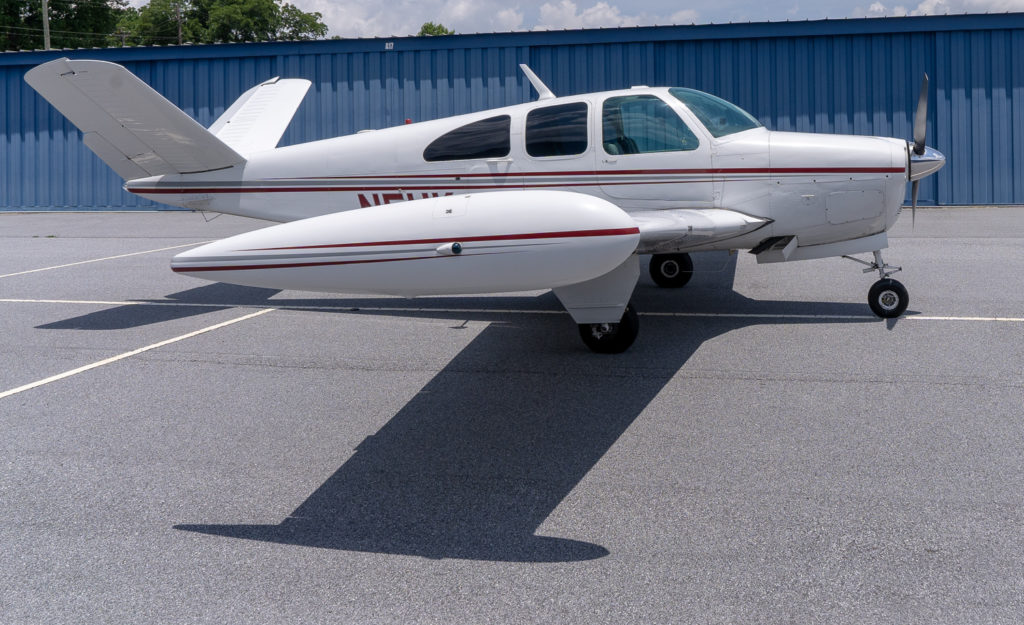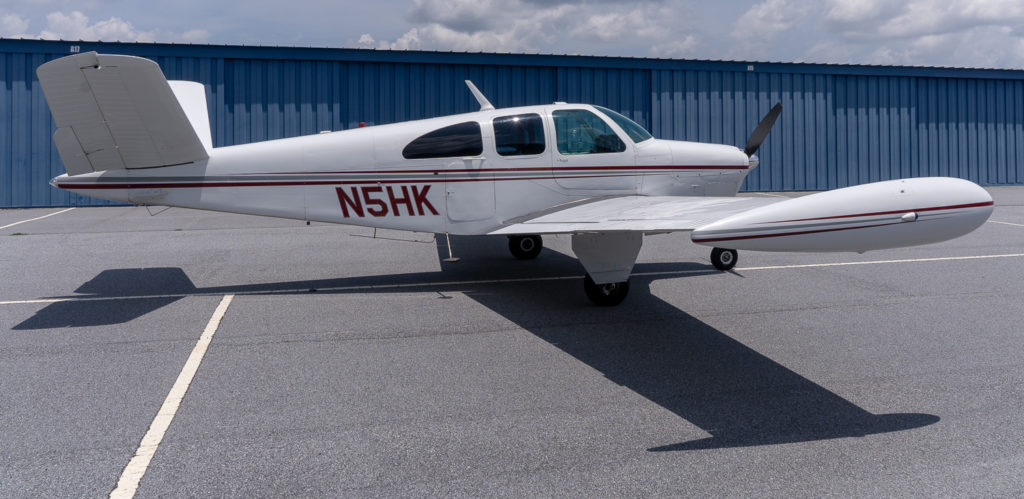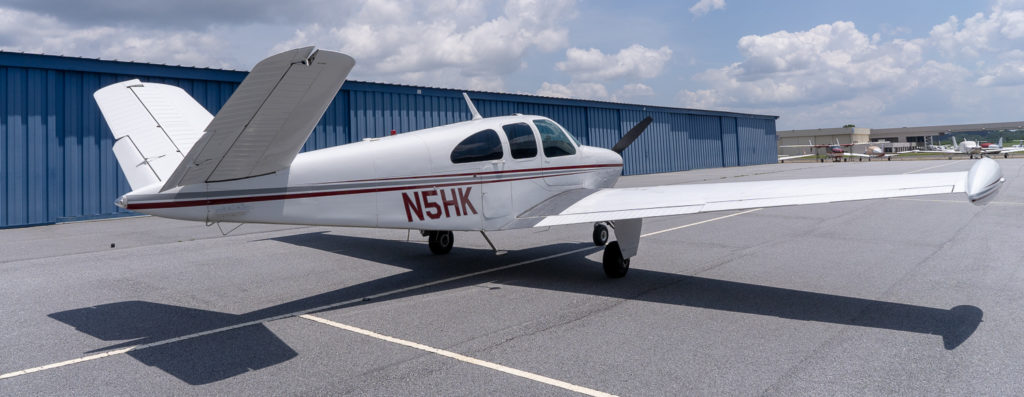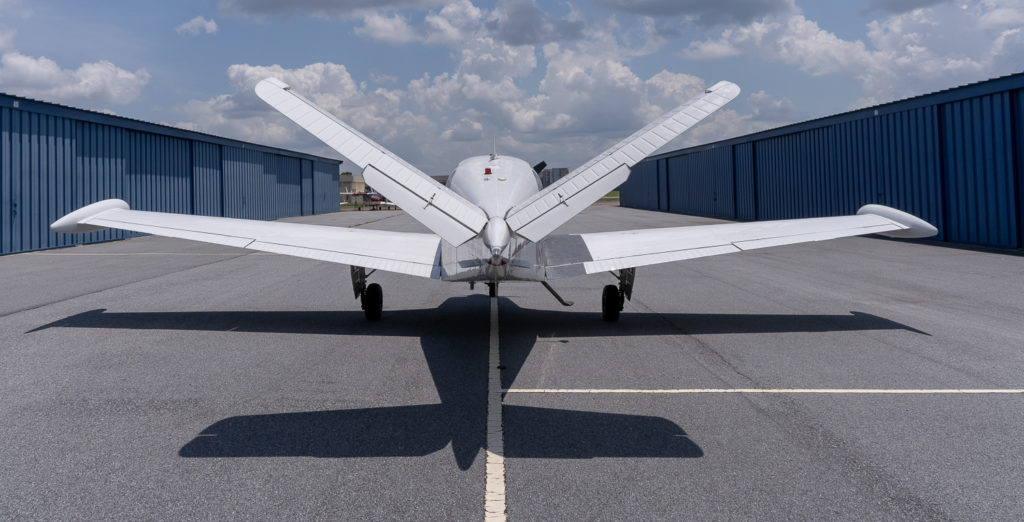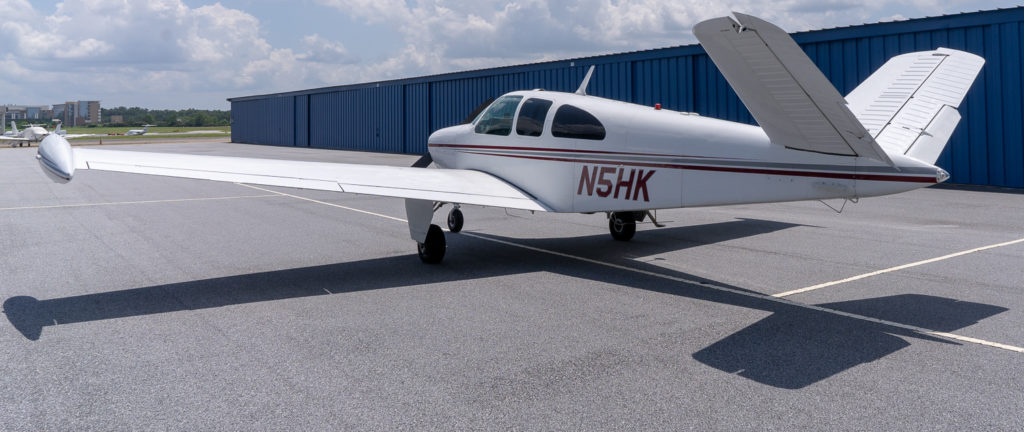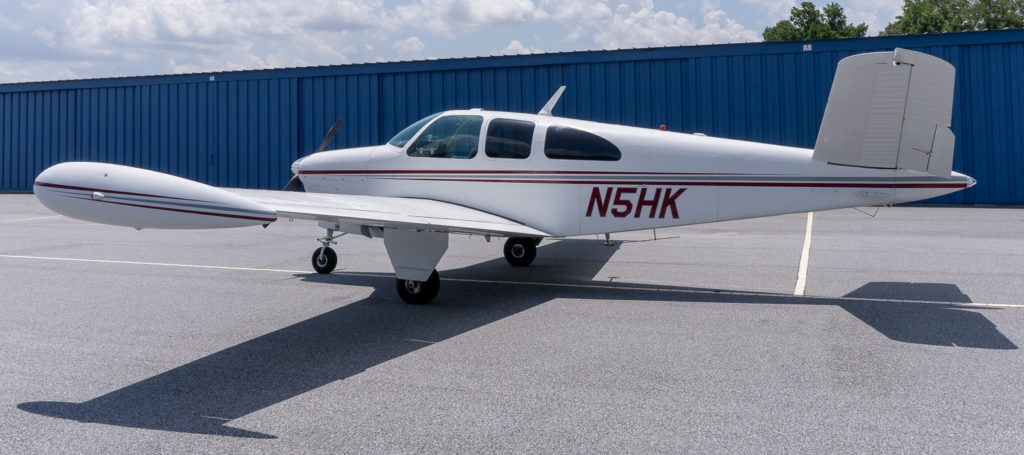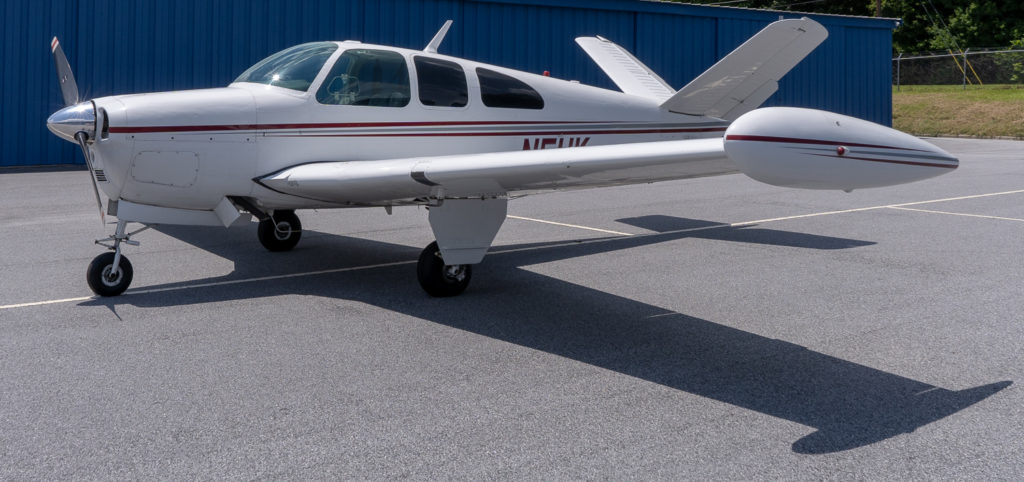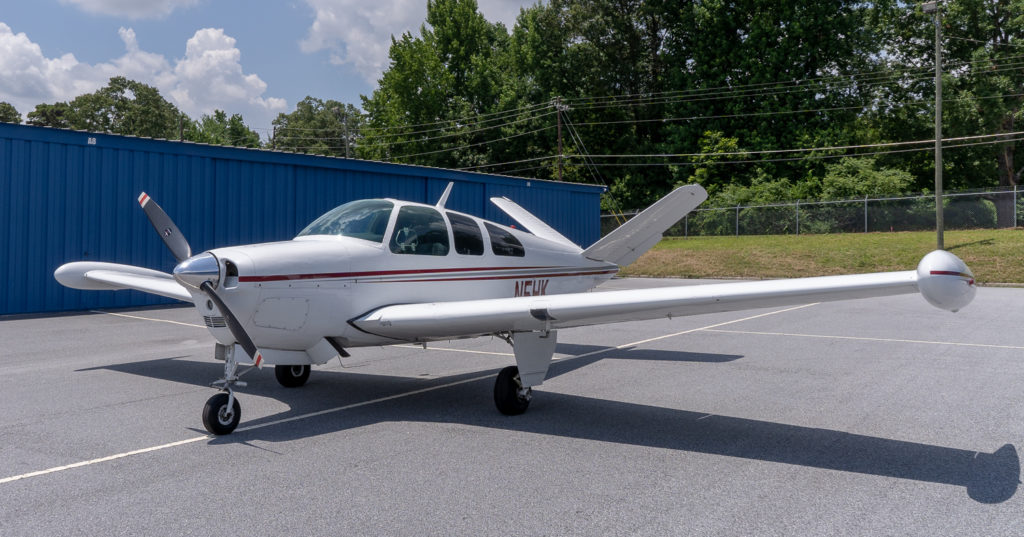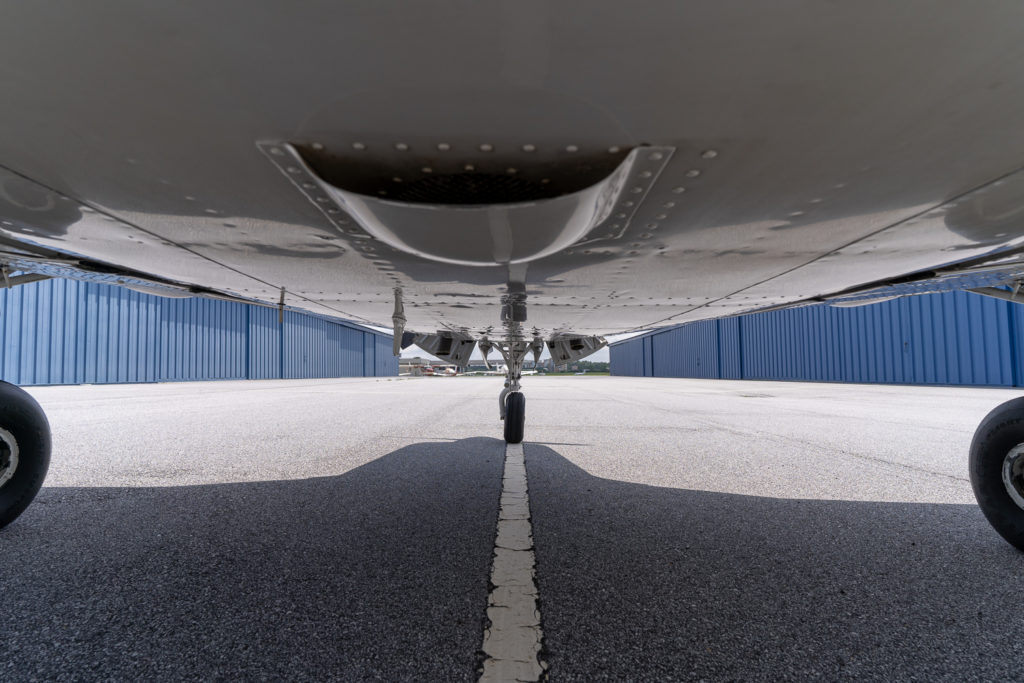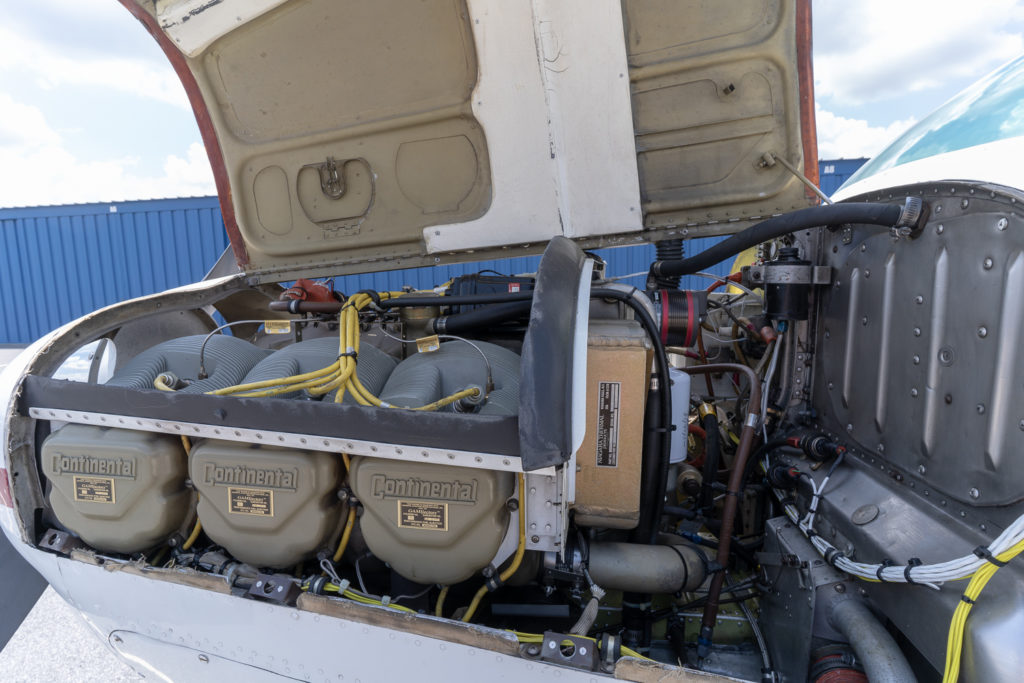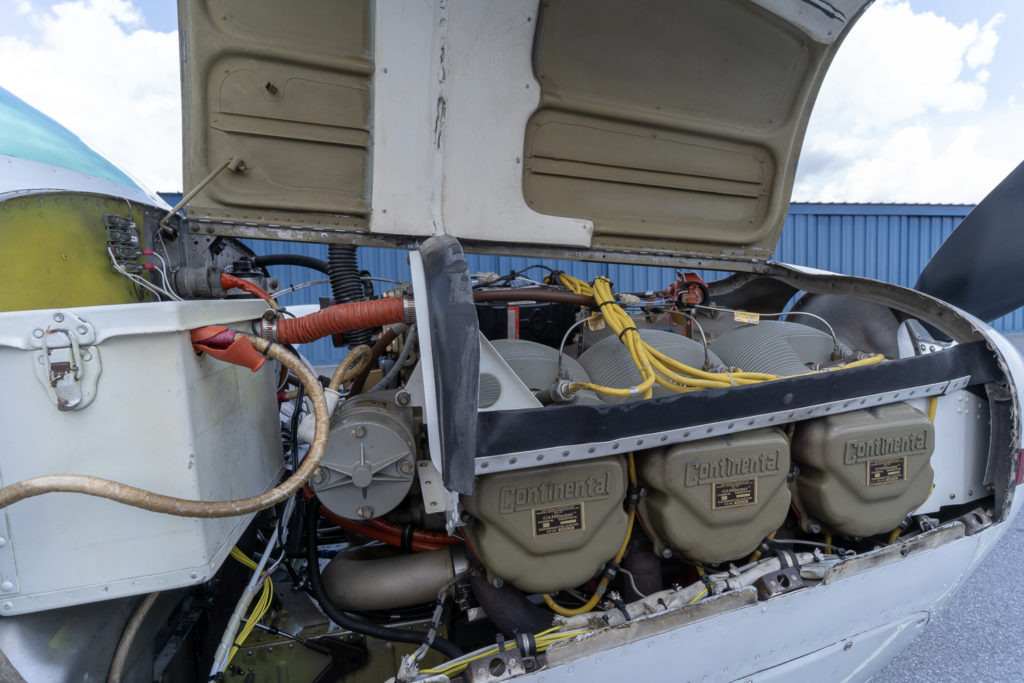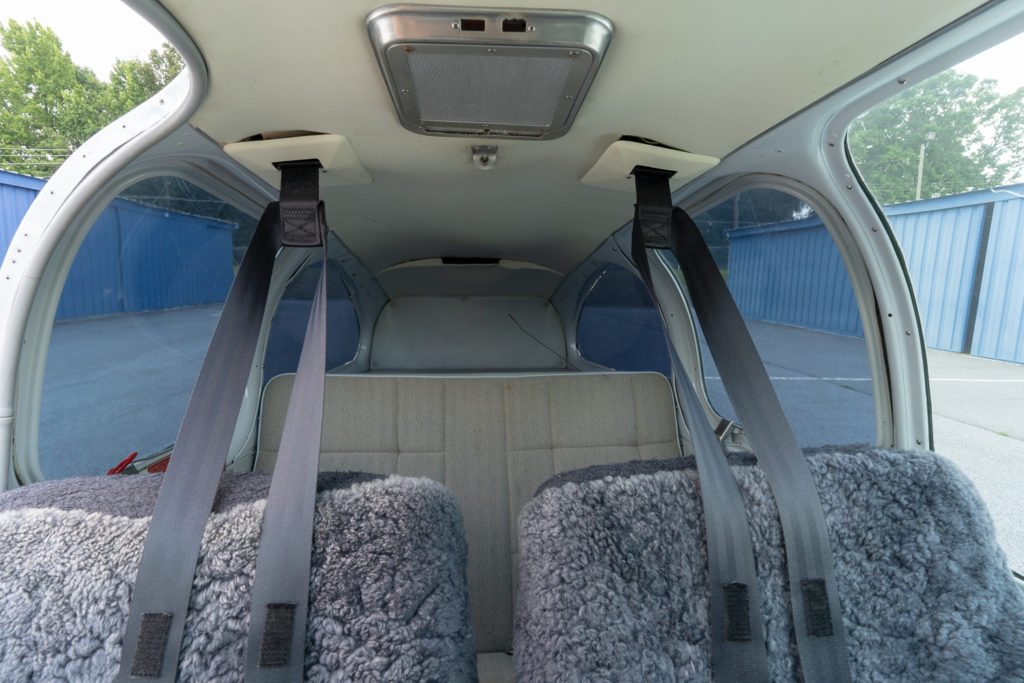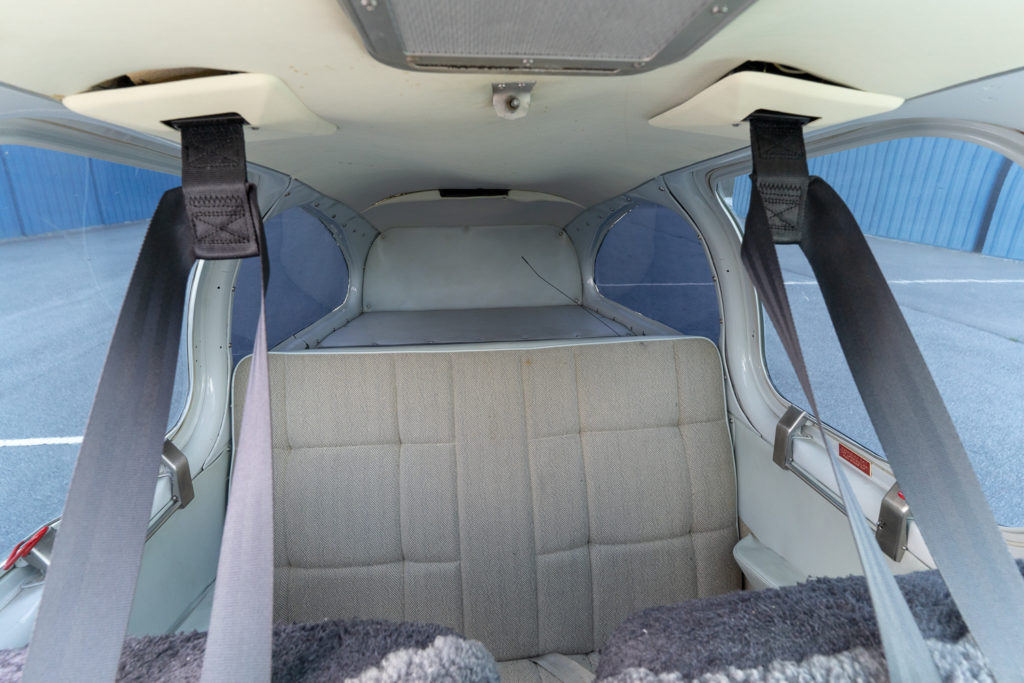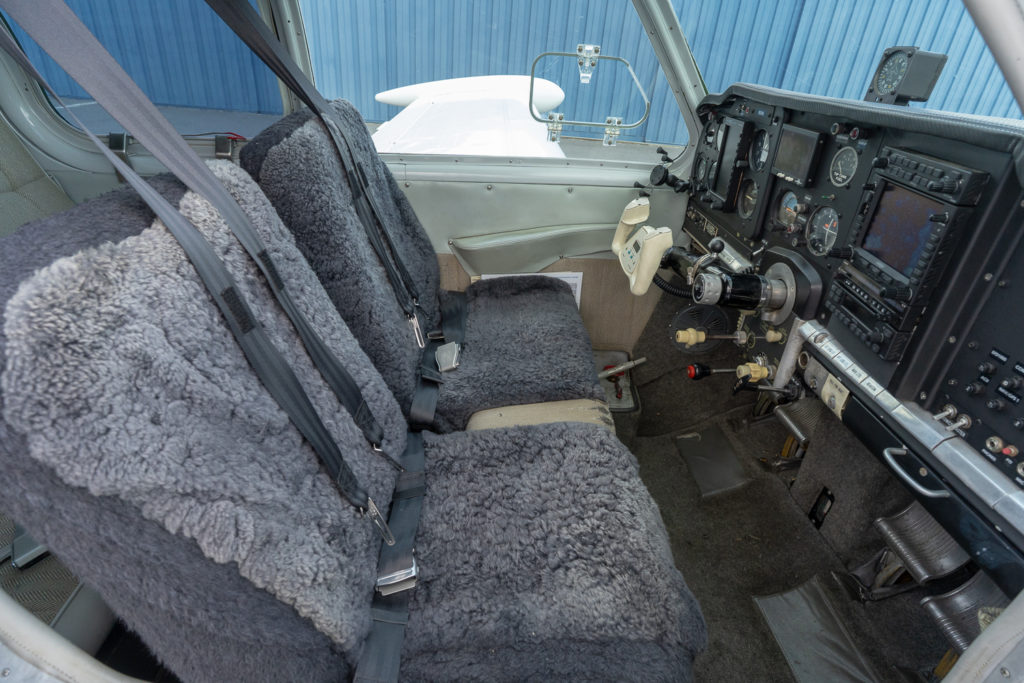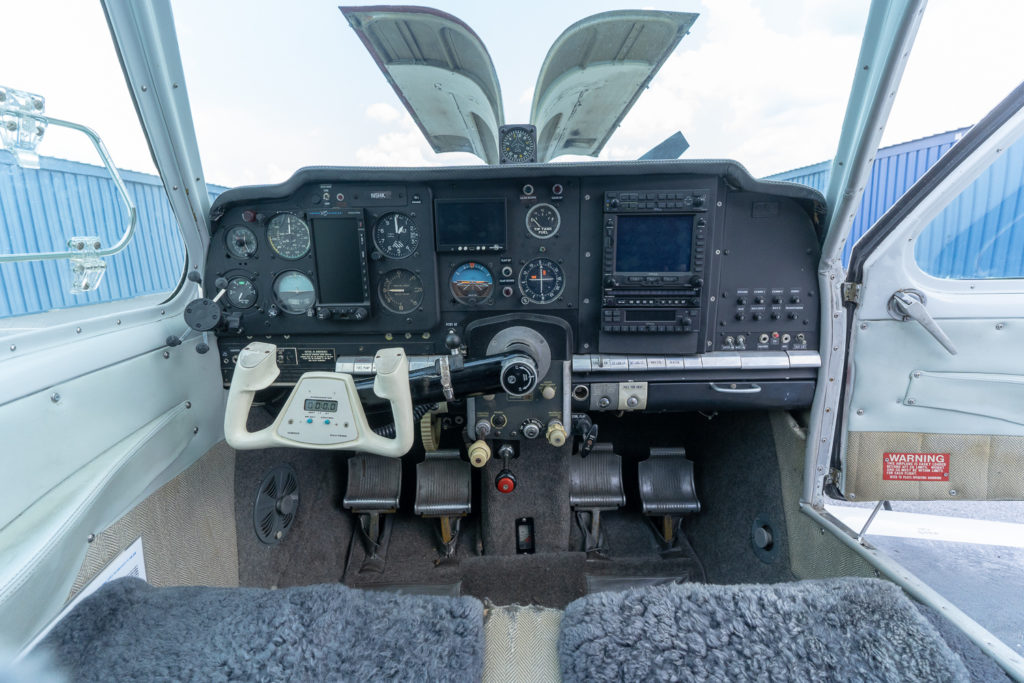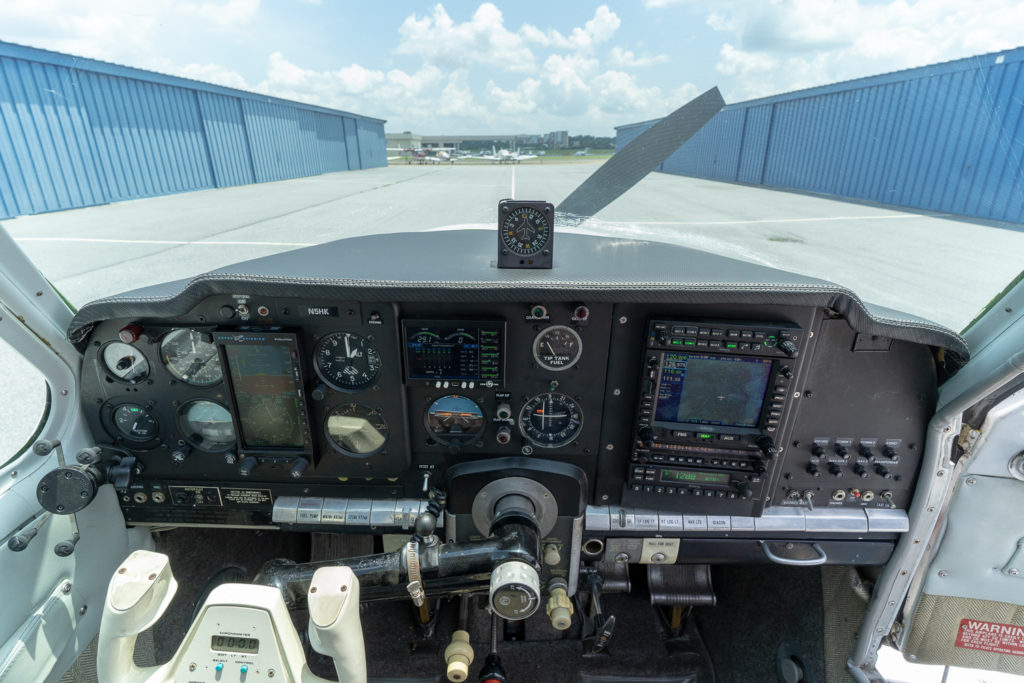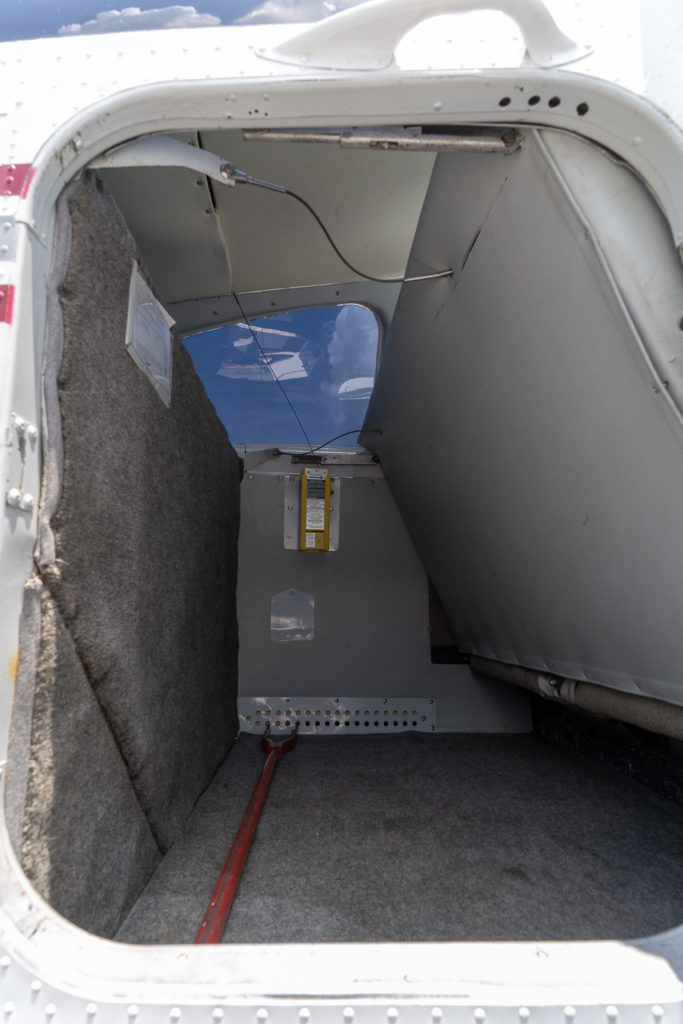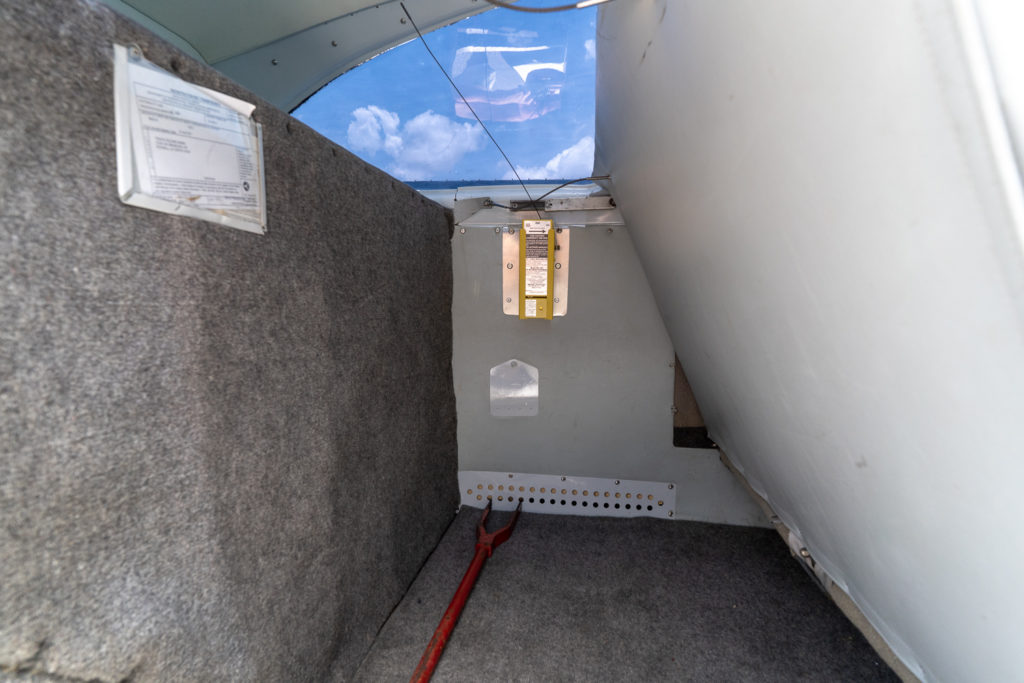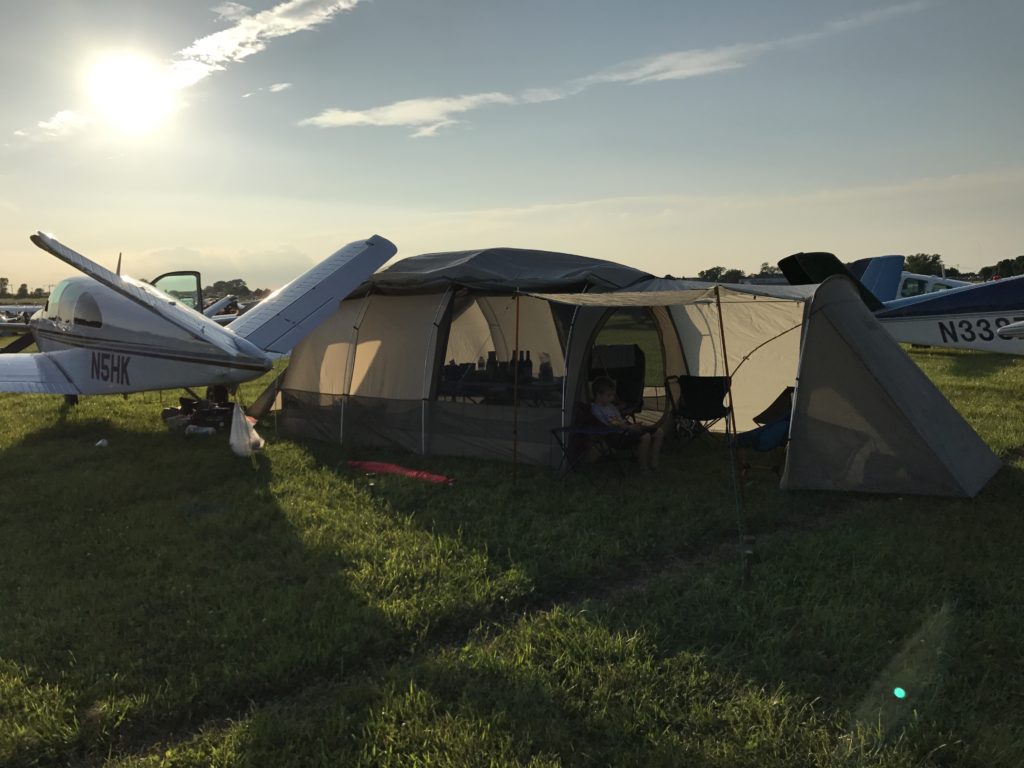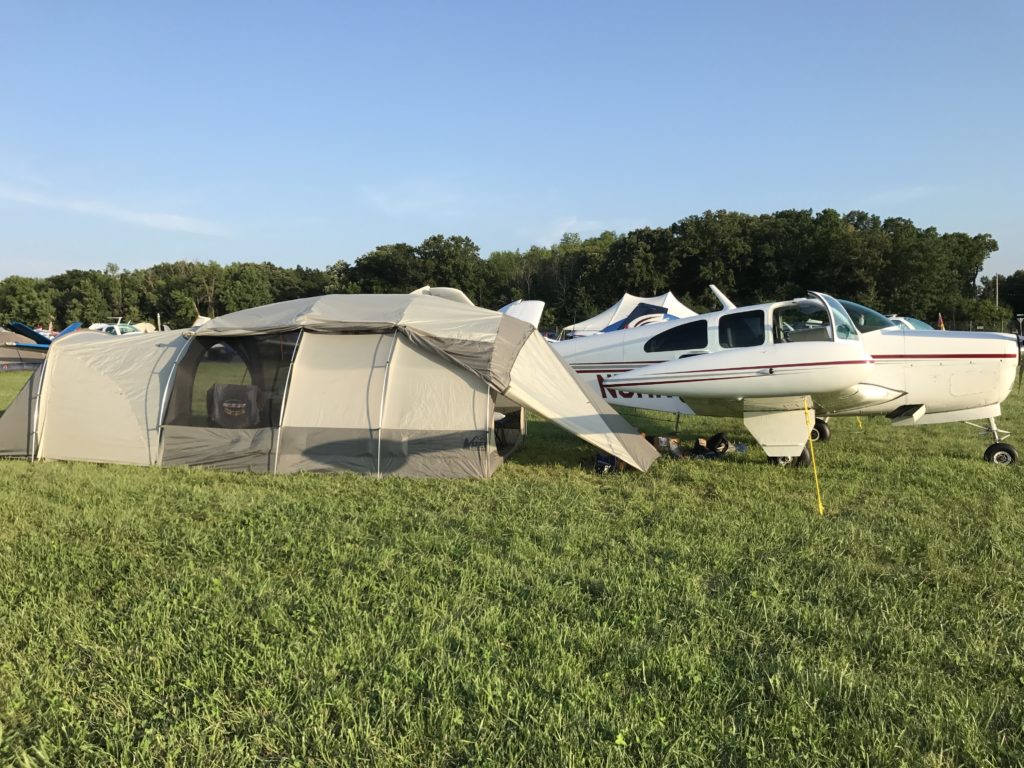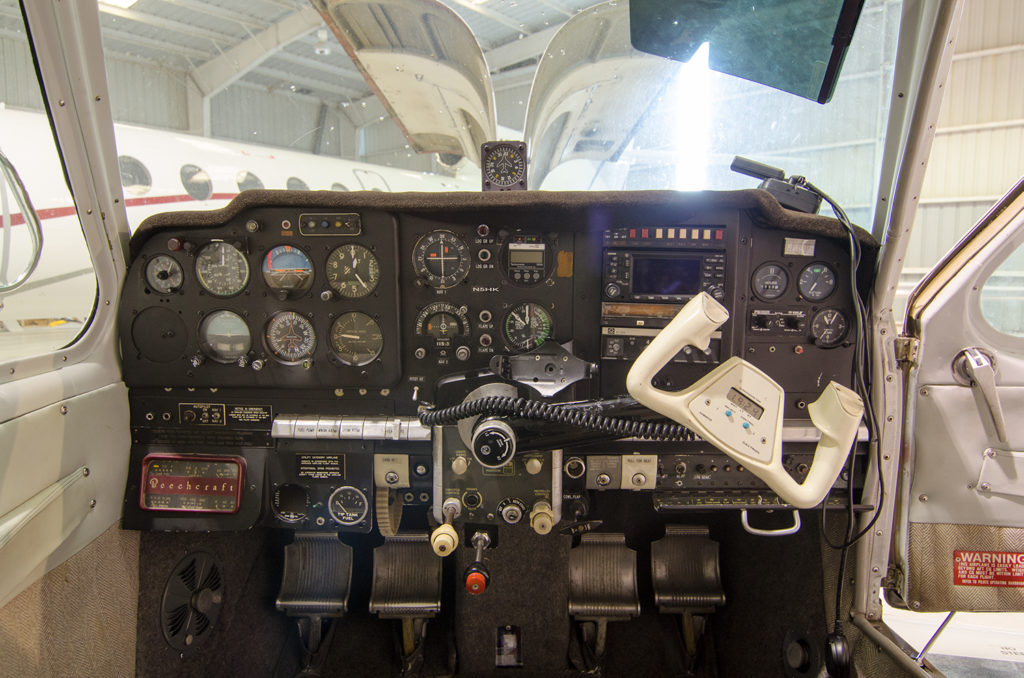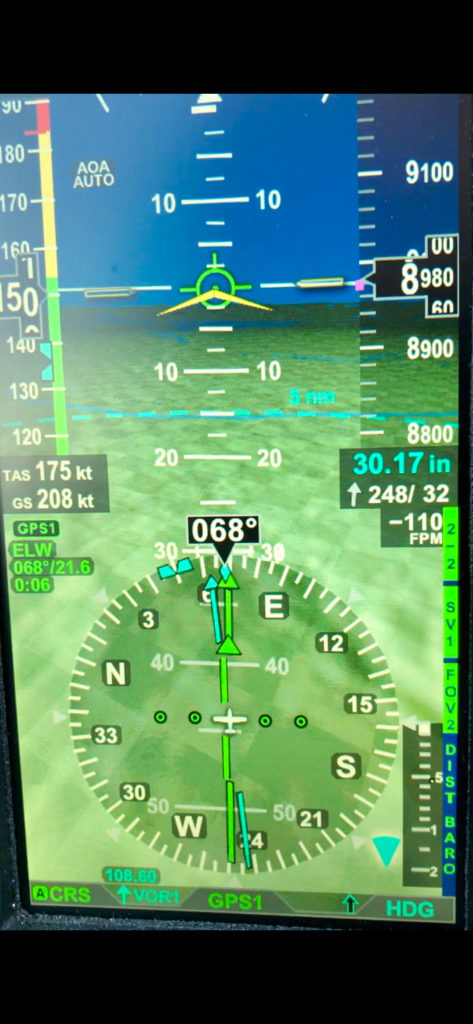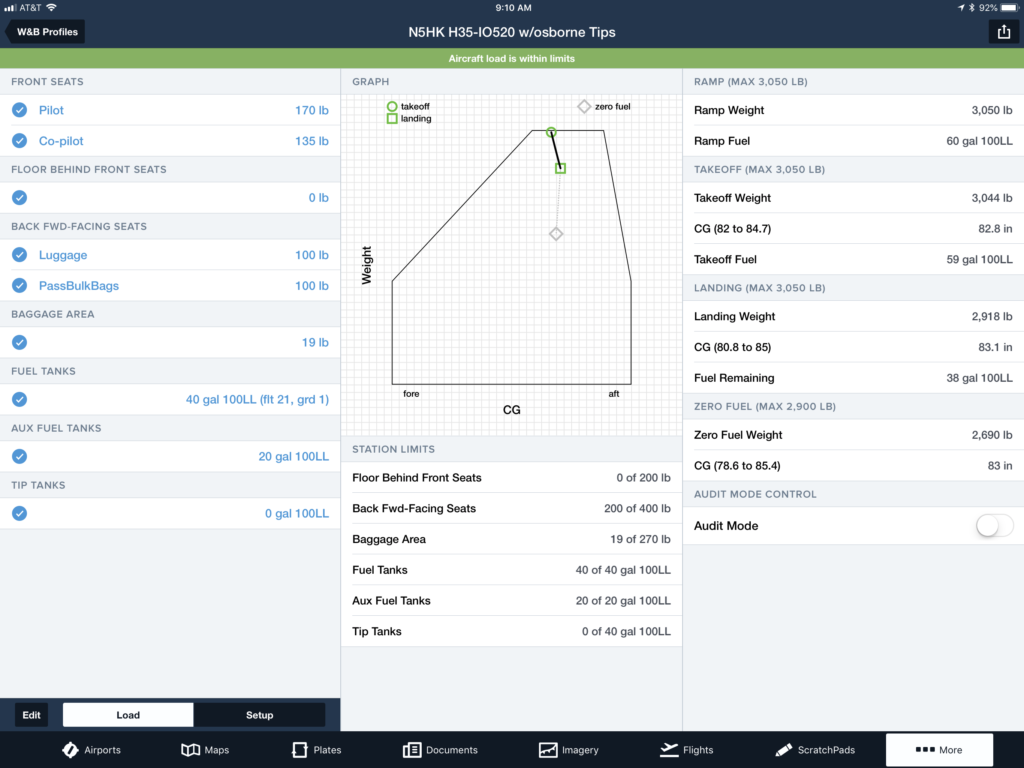N5HK – My Former Bonanza
Highlights:
- IO-520 BB engine, 585 SFREMAN (2009) and 40 STOP with RAM Nickel Cylinders and GAMIs
- EDM-900 engine monitor
- Aspen 1000 Pro with synthetic Vision and AOA
- Full Avidyne stack with ADS-B out
- 100 Gallon fuel capacity with 92 usable
- 174 knots 100 degrees ROP (16 GPH) at 8000 feet or 167 knots 30 LOP (12.9 GPH) at 8000 feet
I’ve decided that I want to buy a twin. I’m at 1400TT with an (almost) commercial-SEL and I’d like to hit 1500TT with a commercial-MEL and ATP-Multi with 100 hours of multi. So, to make that happen, I’m selling my beloved, highly modified, 1957 H35 Bonanza. N5HK has been owned by me since Spring 2014 and is hangared at Dekalb-Peachtree Airport (KPDK) in Atlanta, GA.N5HK will be available for delivery after July 30th, 2018. I need it to take the boys and me to Oshkosh 2018 via the Bonanzas to Oshkosh formation flight. If you are in Oshkosh this year and would like to look at the plane in person, we’ll be somewhere in the B2OSH camping in the North 40.
N5HK has been maintained by Bob and Stephen Ripley since I bought the plane. Annual expires at the end of August, 2018. The mags need to be sent out, but it should be a really clean annual. Call Bob for more information.
N5HK has numerous upgrades and is a pure joy to fly. The most attractive is the very young IO-520 BB engine conversion that is poised for a very long life. The engine was installed in 2009, and was topped in Aug, 2017 with RAM Nickel cylinders. (Continental cylinders from 2009/2010 suffered bad valve-guides from the factory.) The engine has roughly 585 SFREMAN and 40 STOP. It has D’Shannon engine baffles for better engine cooling. It has a Baron style cowl flap control system to keep the engine cool in a climb. It has GAMIs and is monitored by a JPI EDM 900 engine monitor. Logs can be found at Savvy Analysis https://www.savvyanalysis.com/my-flight … faec66cf06 . I routinely outrun other IO-520 birds. Recent tracks can be found on FlightAware https://flightaware.com/live/flight/N5HK. I usually flight plan for 167 knots at roughly 13 GPH at 8000 feet. This usually results in 50 degrees LOP operation. If I run 100 ROP at 8000 (around 16GPH), I can see 174 knots. You will be well into the yellow arc if you run anything more than 60% power below about 5000. 8000 to 10000 is the sweet spot for this bird.
N5HK is ADS-B compliant! You don’t have to worry about the 2020 mandate. N5HK has a complete Avidyne stack of avionics, from the 240 audio panel with 4-place intercom, to the stunningly easy to use IFD-540 GPS/Nav/Comm to the 340 transponder. The 4-place intercom also has a separate music input for the back-seat passengers. This is nice if your pre-teens like music that you are not particularly fond of. Nav #2 is a Garmin 30 nav/comm with ILS. We replaced almost all of the old avionics wiring during the installation.
N5HK has synthetic-vision and AOA through an Aspen 1000 Pro EFIS. It’s amazing how much information is packed into this little screen. Between it and the Avidyne 540, it’s beyond simple to fly complex IFR flight plans.
The weak-link might be the Century I autopilot. It’s absolutely reliable. It’s a wing-leveler or a NAV 1 tracker. It will lock on to a GPS path or an ILS or localizer. There is no vertical guidance, and there is no GPSS or heading-bug steering. That hasn’t stopped me from logging 300+ hours of long cross-country and at times, hard-IFR. N5HK is fairly steady in pitch, so just trim, set the autopilot, and keep an eye on the altimeter. I’ve been looking at the new autopilots from TruTrak and others, you might want to go this path if and when they obtain STCs.
N5HK has 100 gallons of fuel capacity of which 92 is usable. There are 6 fuel tanks, but once you learn it, it’s really simple to manage. All fuel returns to the left tank, so you burn the left tank first, then switch to any of the other 5 tanks, then return to the left tank. Each tank takes 35 minutes of flight time to “drain” since the engine driven fuel pump is drawing 25 GPH and the engine is typically burning 12.1 to 13.5 GPH, so the engine takes about 10 gallons and the other 10 gallons are put in to the left tank. I typically run Left->Right Wing Tip->Left->Left Wing Tip->Left->Aux->Left->Right->Left. I made it once from Newport, RI to Atlanta, GA in 5 hours and 45 minutes averaging 167 knots and still had 19 or so gallons left when I landed.
N5HK has a generous CG of 78.7 inches and a moment of 170,399.22 in-lb. The empty weight is 2166 and the gross weight is 3050. Every year on the trip to OSH, I have never exceeded the forward or aft CG weight limits. That’s with full camping gear and 2 growing boys. (See pictures) At gross weight, N5HK still climbs out at 1300+ fpm at a 2000 foot density altitude. An actual W&B using scales was performed in June 2015 by Bob Ripley. (The actual weight was 100 lbs more than the paper weight! Dangit!)
Paint for N5HK was done at Murmer Aircraft Services in 2001. Interior in Oct. 1997 by Brinker Interior & Trim.
Other valuable options:
– Speed-slope windshield
– P-style rear quarter window with hat rack
– Stinger tail
– Glareshield replaced June, 2018 with carbon-fiber, leatherette style
– New Concorde RG-35AXC battery (2017)
All engine logs are complete as are prop. The airframe logs are missing from 1962 until 1978. However, there are no life-limited parts that have not been touched since 1978.
There was a landing accident in 1983 that can be found here. https://www.ntsb.gov/_layouts/ntsb.avia … c674bae9ba
– Mark
1957 Beechcraft H35 Bonanza
N5HK
Serial # D-4914
Price: $89,500
Contact:
Mark Travis
404.915.3882
mark@travis.aero
Airframe: 6695 TT (as of 6/25/2018)
Engine: 585 SFREMAN 40 STOP – Continental IO-520-BB (Factory 2009/2010)
Propeller: 894 SNEW – McCauley 2A37C223-C (June 2004)
Logbooks: https://www.dropbox.com/sh/37qav203rpe7hgo/AAD08K06rbFI7tY0aS4CCbewa?dl=0
Max Gross Takeoff Weight: 3050
Basic Empty Weight: 2166
Useful Load: 884
Usable Fuel Capacity: 92 gallons
Empty CG: 78.7 inches
General:
- Aircraft hangared at Dekalb-Peachtree Airport (KPDK) in Atlanta, GA
- Always US-based
- Logbooks available on request (will post a link soon after I scan them in)
- All AD’s in compliance
- Annual inspection due 8/2018 (drop it at your shop on 8/31)
- IFR certification due 5/2020
- ELT battery due 7/2018
- Damage history – landing accident in 1983 (See above)
Engine:
- Continental IO-520-BB
- D’Shannon engine baffle kit
- Approximately 40 hours on RAM Nickel cylinders
Avionics:
- Avidyne AMX-240 audio panel
- Avidyne IFR-540 with 10.20 software update (Nav #1)
- Avidyne AXP-340 Mode S transponder with ADS-B out
- JPI EDM-900 engine monitor
- Aspen 1000 Pro with synthetic vision and AOA – extended warranty until 8/2019
- Garmin SL-30 nav/com with glideslope (Nav #2)
- Century I autopilot connected to Nav #1
- Standby artificial horizon (vacuum)
Additional equipment:
- Osborne 20 gallon tip tanks
- Single yoke
- LED landing lights (one in nose, two in wings)
- Brackett air filter
- BAS pilot and co-pilot shoulder harness
- Rosen sun visors
- Cleveland wheels and brakes
No problems with loading this bird! This is camping gear for a week at Oshkosh for me and my two sons. I can still carry 4+ hours of fuel (4+ without reserves, you’ll need to figure in your own reserve.)
This is the original panel when I bought N5HK in April, 2014. Nothing has been left untouched! All of that old wiring from 1957? Mostly gone or brought up to 2018 standards.
This bird is a speed demon! If you are in the right tailwind on a long trip, it’s fun to burn a few more dinosaurs.
A few people asked for more interior shots. I put together two basic YouTube videos.
W&B and Range
The H originally came with a 2900 lb gross weight. The tip tanks increased that weight by 150 lbs to 3050. Oddly, there was no gross weight increase with the conversion from the O-470 (240 hp) to the IO-520 (285hp). We called D’Shannon directly and verified this.
It’s essentially an “S” model, but the S has a 3400 gross weight. So, there’s a 350 lb margin of saftey built into my plane. If you were to find an S or later equipped like mine, you’d be well into the 6-figures.
I haven’t found a situation where I was in a bind. I flew non-stop from Newport, RI to Atlanta a couple of winters ago and it was a 5.75 hour flight and I had 19 gallons of gas left when I landed. I flew at 167 knots at 12.3 gallons per hour.
You just don’t need all that gas. What you get is infinite flexibility in range or payload. Attached is a picture of the W&B for me, my girlfriend (with handbag and accessories), and 219 lbs of luggage with 60 gallons of fuel. That will take us 3 1/2 hours away with a 1 hour reserve, which is almost 600 nautical miles away with no wind. (We never pack 219lbs of luggage.)
You’ll still see 1100 to 1300 fpm in the climb at this weight.
